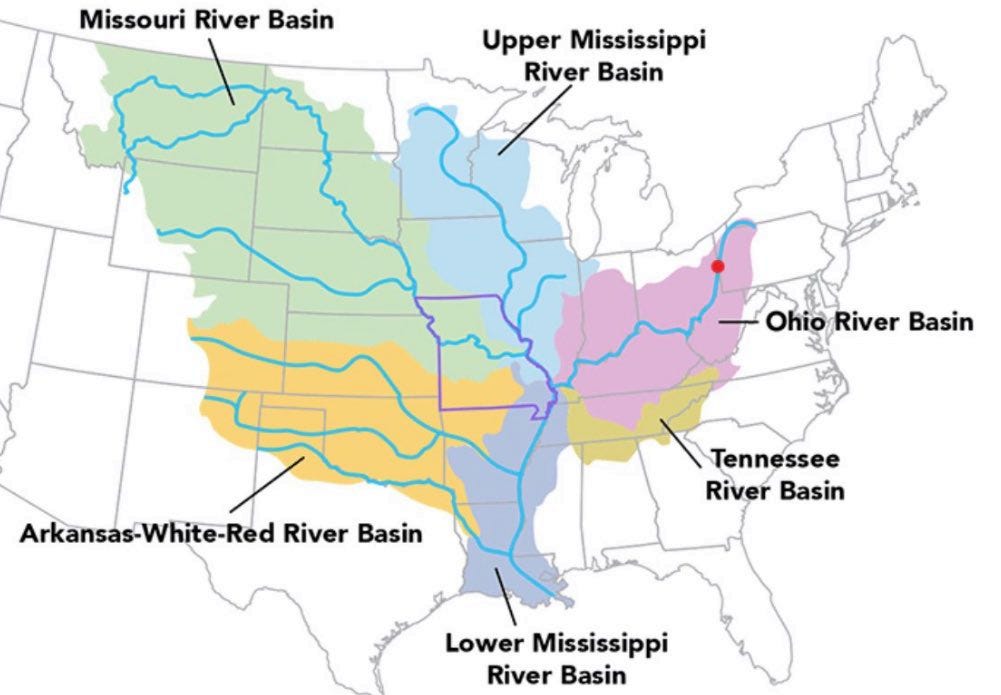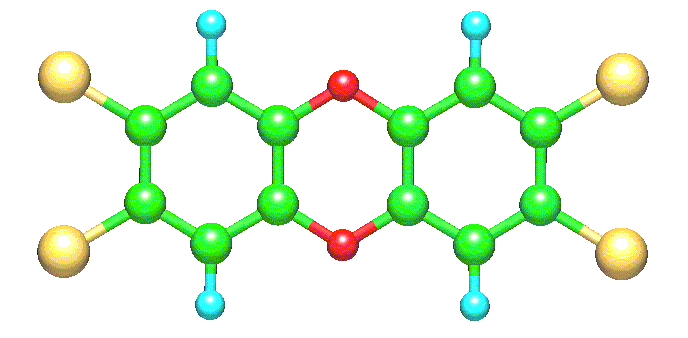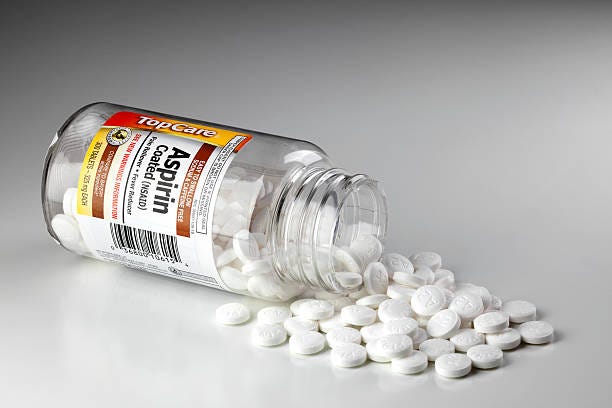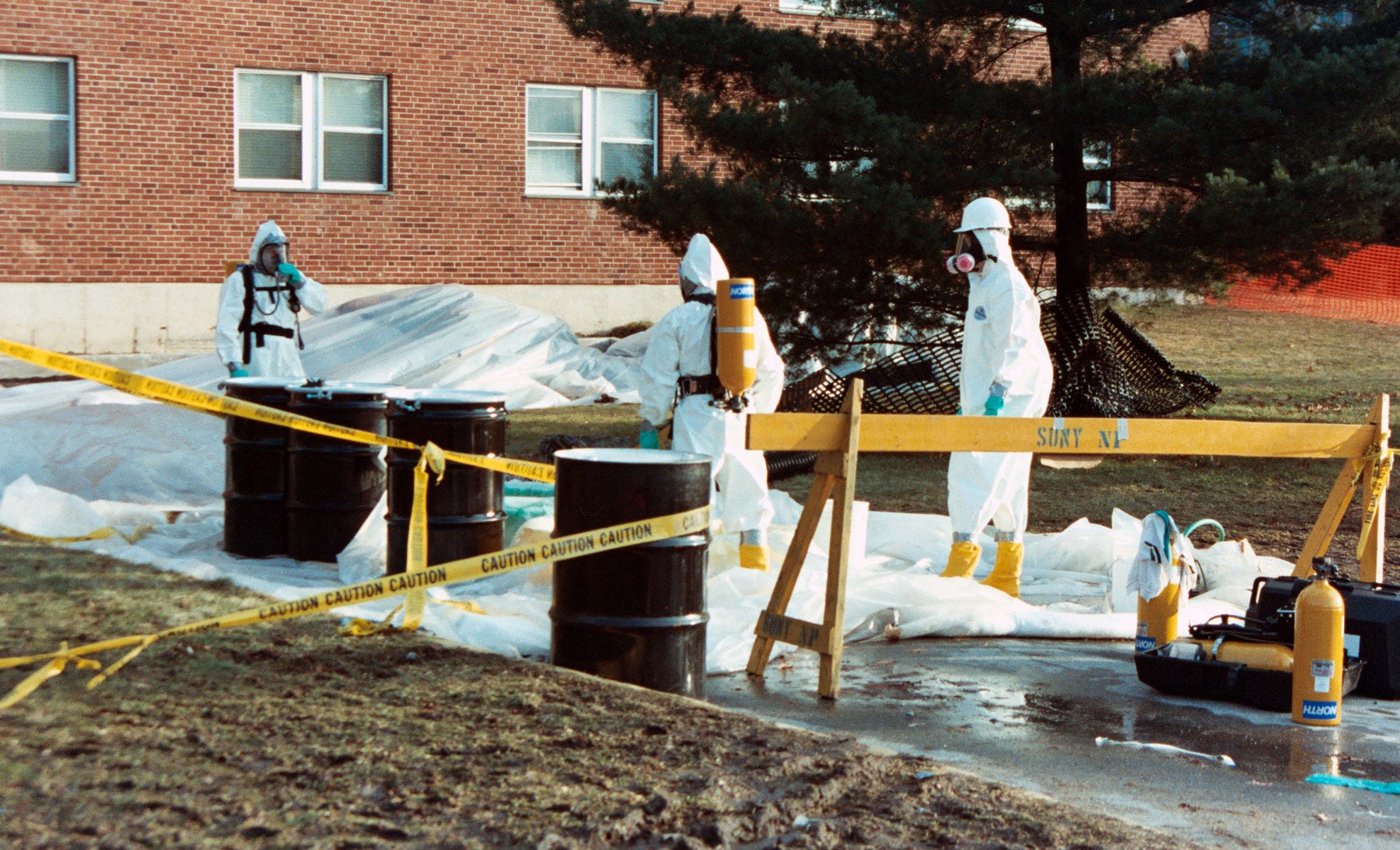Update, Sunday, Feb. 19 — We’ve been trying to determine who is responsible for the decision to dump and burn the vinyl chloride. First, EPA’s National Response Center was notified of the derailment and spill about two hours after it happened. So they are in a “knew or should have known” position regarding what was happening immediately.
Do not miss Gov. Shapiro’s letter to Norfolk Southern.
Up until Monday. Feb. 6, there appears to have been an evacuation recommendation, but on that day the governors of Ohio and Pennsylvania upgraded it to an evacuation order, to accommodate the dump and burn decision by the railroad. It would appear that while the governments were given some information, there was not a coordinated response.
The question is, at what point did the known degradation byproducts enter the scenario? Was dioxin in the discussion? This is what we are now working to establish; it may take a while, as we will need to use the FOIA. — efc
Dear Friend and Reader:Note, this article contains updated facts, related to the number of cars containing chlorine-based materials. There are a total of nine, and to the best of our knowledge, all of their contents burned.Most coverage of the train wreck in Palestine, Ohio is missing one word: dioxin. There were reportedly five tanker cars full of vinyl chloride monomer (VCM), a precursor to polyvinyl chloride — that is, vinyl or PVC. Then there were four cars filled with PVC pellets. Burning vinyl is tied for the most serious source of dioxin in the environment — whether from trash incinerators, house fires or chemical spills. The other is the effluent from paper mills, which use chlorine bleach.
While vinyl chloride is a precursor chemical to making PVC, any time chlorinated compounds burn there will be dioxins created. And dioxin is also a byproduct of any manufacturing process involving chlorine, from “disinfectants” to the bleaching of paper. There was plenty of dioxin in those tanker cars before they caught fire.
The vinyl chloride monomer (PVM) was then dumped on Monday, Feb. 6 and
set on fire by the railroad. This was done with the authorization of Ohio Gov. Mike DeWine; the governor of Pennsylvania is saying he was not consulted. But according to news reports, both states issued an evacuation order prior to the dump and burn.Additionally, the U.S. EPA was informed of the incident just two hours after it happened, on the night of Feb. 3. This places them in a “knew or should have known” situation, unless they were blatantly lied to by Norfolk Southern. Several sources are saying that it was the railroad’s intent to open the tracks as soon as possible, which would have been delayed by a proper recovery operation.
Burning the chemicals was the worst possible decision. It has turned many, many miles into what should be no-man’s land. But I have not heard of one single test for dioxin being done.
The fact that chlorine was available in the vicinity of ordinary fires (such as of wheat or motor oil) turns that material into feedstock for dioxin. All you need are hydrogen, carbon, oxygen, and chlorine — plus combustion — and there will be some dioxin, or very high amounts of it, formed in the process.
Note that chlorinated dioxin goes by several other names, including TCDD, and is sometimes abbreviated “2,3,7,8.” Dibenzofurans, or furans for short, are nearly identical in their toxicity but are spoken about less often. Many other chemicals, such as PCBs, are considered “dioxin-like compounds” for regulatory purposes due to their toxicity.
Additional note: There is another type of chemical called “dioxin,” which is a functional group (kind of like a frequently used syllable in chemical formulas), 1,4-dioxin. This is not especially toxic in its non-chlorinated form and is probably the dioxin referred to when we are told that it’s created by the combustion of diesel fuel (where there should be no chlorine available).
When I say dioxin below, I mean specifically chlorinated dioxins, and in particular, 2,3,7,8-TCDD and its toxic equivalents.
This coverage is prepared by the nonprofit Chiron Return team. Your paid subscriptions make all of our work possible. Thank you.

Watershed map — where the toxins could go, not where they definitely will go. However, toxins travel many miles by ground and surface water, soil movement, wind, and through the food chain. Everyone needs to be concerned.
This Affects a Very Large Region of the Country
This is not a local issue. This massive plume will spread far and wide, and is being blown by the prevailing winds across Ohio, Pennsylvania and New York State, toward the population centers of the northeastern U.S.
And via land and water, the toxins can spread in many directions, via water, soil movement and air (since the prevailing winds are only an average). And the contamination is so serious that even soil tracking will spread significant amounts.
What few people remember is how the town of
Times Beach, Missouri was evacuated, purchased by the federal government, leveled and had its zip code removed, from far, far less dioxin contamination. It’s now a state park, though I’m not sure who would want to have a picnic there.

Times Beach, Missouri.
Dioxin Has Been Silenced for a Generation
Dioxin has been out of the news for more than 30 years. Therefore, very few people today have any sense of the problem — including journalists and editors. It is one of the most serously environmental issues, but the background is not known by nearly anyone (and that’s partly why I have posted the history below).
After
a series of fraudulent articles in
The New York Times that claimed they are as dangerous as sunbathing, the issue disappeared. A federal reassessment of dioxin’s toxicity was stuffed early in the Clinton administration. I cover the reassessment
in this 1994 article I wrote for
Sierra.
Dioxins are Degradation Byproducts of Chlorine-Based Chemicals
Dioxins and their first cousins furans are compounds created when chlorinated chemicals burn, explode or degrade. They are never made as a product; they are a contaminant and degradation product. They are
directly related to PCBs, which are considered dioxin-like compounds.
Dioxins were the extremely toxic component in the Vietnam War-era defoliant Agent Orange. The were at the Love Canal in Niagara Falls; they were the toxin involved in the evacuation and dissolution of Times Beach, Missouri. They are the cause of toxic shock syndrome from bleached paper tampons.

2,3,7,8-TCDD, or dioxin for short. Note the double benzene ring structure, which makes them extremely durable and persistent. The shape — a planar or flat molecule — is largely responsible for its toxicity.
Dioxins are acute toxins on one level, but generally not to adults. There will be a lot of dead fish and animals in the path of the Ohio plume — and some people will get very sick immediately. For most adults it is more of a long-term toxin.
Kids are extremely sensitive due to their low body weight and must be removed from the region if possible. So too must pregnant women.Dioxins are a Hormonal Toxin
But then there is another level of the problem. Dioxins are 1) hormonally toxic and 2) they are extremely persistent and they then build up in the food chain, generally in lipids. They are
bioactive. All this BS projected onto viruses is absolutely true for dioxins, though the contagion factor is different (running through families for instance, passed through mother’s milk, affecting whole communities through a toxic release, etc.).
Dioxins are connected to every other toxins issue that ever lived, from DDT to PCBs to Roundup…they are orders of magnitude above in their effects, though it’s
worth reading this for some background.
Many PCBs are close enough to dioxins to qualify as such; and PCBs degrade into dibenzofurans (also called furans), which are dioxins with one molecule of oxygen instead of two. Dioxins are never made intentionally; similar toxins are, but dioxin per se is a byproduct of other chemical processes, or a degradation byproduct.
This coverage is prepared by the nonprofit Chiron Return team. Your paid subscriptions make all of our work possible. Thank you.
Due to PVC, Plastics Industry is the #1 PolluterThe plastics industry is now the number one dioxin polluter (thanks to polyvinyl chloride), followed by the pulp and paper industry, due to the bleach used to make paper and absorbent paper products white.
This is why nobody should ever use low-grade, non-organic paper feminine products. Use something that is not bleached with chlorine.PVC is burned in every house fire, trailer fire, car fire and in the incineration of municipal and industrial waste. And when that happens, dioxins are created. Dioxins are also a contaminant or byproduct of nearly every chemical process involving chlorine. There have been numerous dioxin scandals over the years (such as involving contamination of Lysol “disinfectant,” Phisohex “antibacterial” soap and many, many others. Due to the dioxin problem, you want to avoid any “antibacterials” because many are made with chlorine.
Please see my coverage of the most famous dioxin lawsuit, Kemner v. Monsanto, about another train wreck, in Sturgeon, Missouri. In this lawsuit, the ugly truth about dioxin and Monsanto came out into the open.One Quote is Making it Into Some Articles
There is one accurate quote about dioxin that is
making the rounds, in connection to the Palestine disaster:
Neil Donahue, a professor of chemistry at Carnegie Mellon University in nearby Pittsburgh, said he worries that the burning could have formed dioxins, which are created from burning chlorinated carbon materials.
“Vinyl chloride is bad, dioxins are worse as carcinogens and that comes from burning,” Donahue said.
Dioxins are a group of persistent environmental pollutants that last in the ground and body for years and have been one of the major environmental problems and controversies in the United States.
Dr. Lynn Goldman, dean of George Washington University's School of Public Health, agrees this is a possible risk, but is more concerned about uncombusted vinyl chloride vapors that could be lurking in the immediate vicinity.
"Until there has been a thorough assessment, the soot as well as any other materials should in my opinion be treated as contaminated by vinyl chloride and/or dioxins or other contaminants until proven otherwise,” she said.

As much dioxin contained in the weight of
one aspirin tablet is enough for the “safe dose” for 32 million people, according to EPA standards.
Dioxin’s Toxicity is Incomprehensible
Peter Montague, author of
Rachel’s Hazardous Waste News, summarizes the toxicity of dioxin in the historical articles below:
How can we express this in terms that people can grasp? Let's compare it to one single aspirin tablet. One aspirin tablet weighs 5 grains (or 325 milligrams, or 325 trillion femtograms), so to express one "safe" lifetime dose of 2,3,7,8-TCDD, you would take a single aspirin tablet and divide it into 32 million (actually 32,172,218) miniscule pieces. Then one of those tiny pieces would represent one "safe" lifetime dose of 2,3,7,8-TCDD.
That means that the weight of
one aspirin tablet is the equivalent lifetime “safe dose” of dioxin for more than 32 million people. This is one reasons why manufacturers don’t want to distill it out of the products where it slips in — they don’t know what to do with it. So they let it go out into the environment, unmitigated.
We will have more on Friday’s edition of
Planet Waves FM.


Even this level of protection is not truly safe for the workers, who are cleaning a dioxin-contaminated area outside Bliss Residence Hall at SUNY New Paltz, January 1992. Photo by Eric Coppolino for Student Leader News Service.
Brief Summary of Dioxin Incidents and Fraud from the Environmental Research Foundation
By Peter Montague, Ph.D. |
Link to Original in
Rachel’s Hazardous Waste News from March 1991. Peter was sued for libel by Monsanto for these articles.
See my coverage.
FOR YEARS, INDUSTRY SCIENTISTS have been claiming there's no evidence that dioxins cause cancer in humans. Now there is mounting evidence that such claims rely heavily on studies that are fraudulent. Two companies recently accused of producing fraudulent dioxin-and-health data are Monsanto and BASF.
MonsantoA scientist with U.S. Environmental Protection Agency (EPA) says Monsanto falsified data in important studies that Monsanto used to support its claim that dioxin does not cause cancer in humans. Dr. Cate Jenkins, a chemist in EPA's Office of Solid Waste and Emergency Response, says EPA itself relied upon Monsanto's fraudulent data in setting health standards for dioxin, and Jenkins has asked the EPA's Science Advisory Board to reopen the matter of EPA's dioxin standards, to take a fresh look at available data.
[1]Two important sources of dioxins in the environment are old chemical dumps and the incineration of municipal solid wastes,
[2] which is why EPA is concerned about allowable levels of human exposures to dioxin.
BASFThe British technical journal, NEW SCIENTIST, says, "A new analysis by a West German epidemiologist may have established the first clearcut evidence of a direct link between exposure to dioxins and cancer in humans. Friedemann Rohleder, an independent specialist, has produced a report detailing an unexpectedly high incidence of cancer among workers exposed to dioxins during an industrial accident at a chemicals plant in 1953.
[3]"The plant, operated by the West German company BASF, made trichlorophenol. Rohleder claims the company presented the data in a way that disguised the cancers," says NEW SCIENTIST.
BackgroundEach of these claims of fraud relates to an industrial accident in which workers were exposed to dioxins; follow-up medical studies funded by the responsible companies have been published in mainstream scientific journals, claiming to show that no excess cancers have occurred in the dioxin-exposed workers. In fact, excess cancers have occurred, but it appears that the data have been manipulated to hide the facts.
The Monsanto CaseIn 1949, an explosion occurred at a Monsanto chemical factory in Nitro, West Virginia; as a result, many workers in the plant were exposed to the herbicide 2,4,5-T, which was contaminated with dioxin. (This herbicide was later the principal component of Agent Orange, the chemical defoliant used by the U.S. in Viet Nam.) In subsequent years, two Monsanto scientists, J.A. Zack and R. W. Gaffey, studied the exposed workers, comparing their health against the health of a similar group of workers who were not exposed to dioxin or 2,4,5-T.
[4]According to court docuмents attached to the EPA memo,"Zack and Gaffey deliberately and knowingly omitted 5 deaths from the exposed group and took four workers who had been exposed and put these workers in the unexposed group, serving, of course, to decrease the death rate in the exposed group and increase the death rate in the unexposed group."
Other studies of this same accident were also fraudulent, according to the same court docuмents, including a study by R.R. Suskind published in the
Journal of the American Medical Association [
5] "This published study of the workers exposed in the 1949 accident reported only 14 cancers in the exposed group and 6 in the unexposed group” (a smaller cohort).
However, the medical records produced [by Monsanto] to the Plaintiffs conclusively prove gross miscalculations and omissions... there were 28 cancers in the group that had been exposed to dioxins in 1949 as opposed to only 2 cancers in the unexposed group." Mr. Suskind published two other reports
[6,7] on the same accident, using his same data, to reach the conclusion that dioxin does not cause cancer.
The BASF CaseOn the night of November 17, 1953, a runaway chemical reaction spewed dioxin-contaminated chemicals over workers and community residents of two small German cities, Mannheim and Ludwigshafen. Subsequently, an epidemiological study was used to deny workers any compensation for ailments they claimed they suffered as a result of exposure.
In keeping with German law, the workers retained their own expert to review the data. Their expert, Friedemann Rohleder, received the data from the German government but found, to his surprise, that all the data actually came from the BASF company itself. He analyzed the data and found that some workers suffering from chloracne, which is universally acknowledged to be evidence of high exposure to dioxin, had been placed in the low-exposure or non-exposed group.
He found evidence of "diluting" the exposed group with 20 plant supervisory staff who, Rohleder believes, were not exposed. When Rohleder omitted the 20 supervisory staff, his analysis revealed statistically significant increases in two groups of cancers: cancers of the respiratory organs (lungs, trachea, etc.), and cancers of the digestive tract. "This analysis adds further evidence to an association between dioxin exposure and human malignancy," Rohleder told
New Scientist.